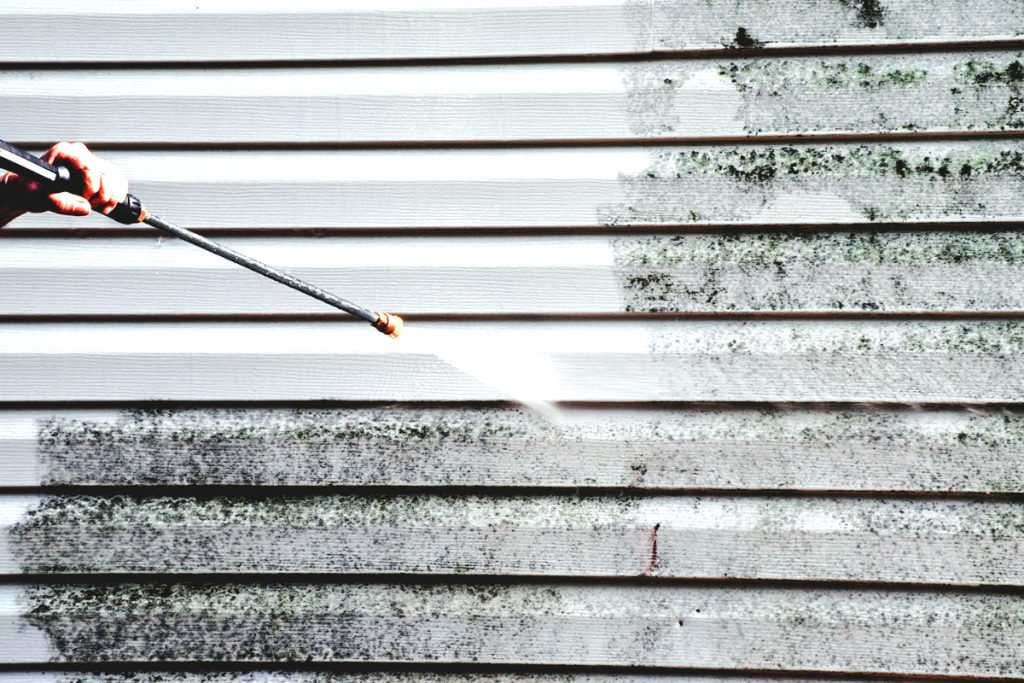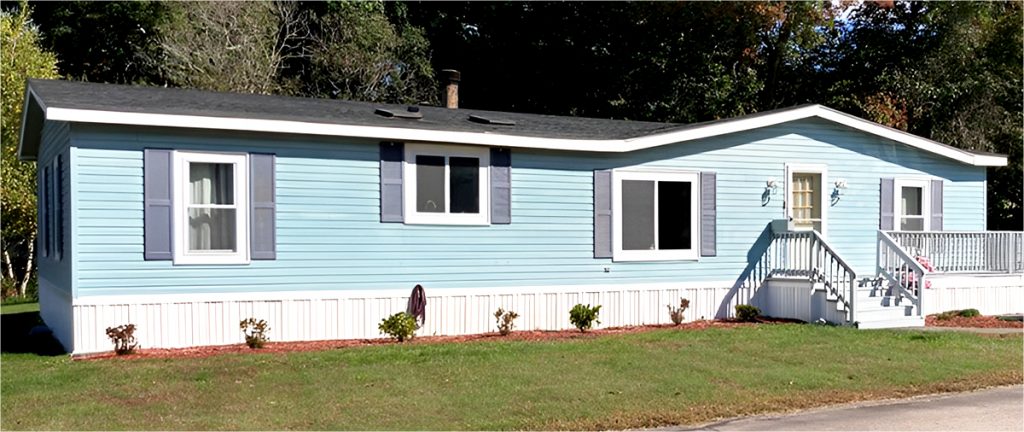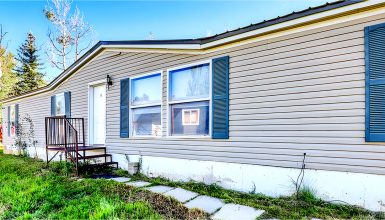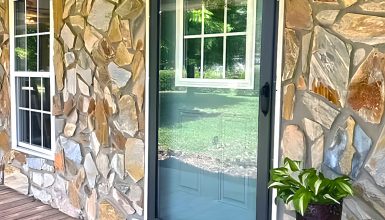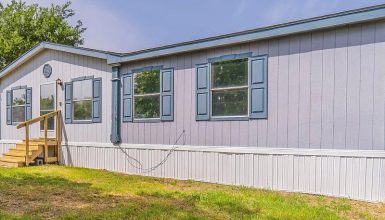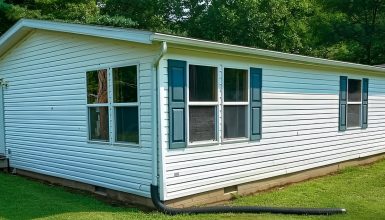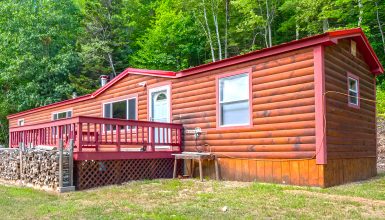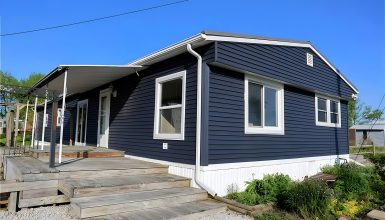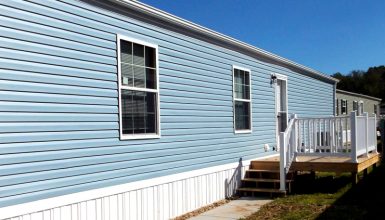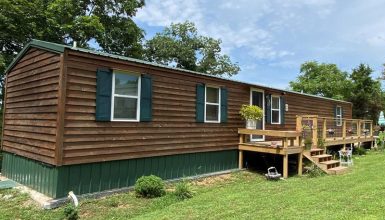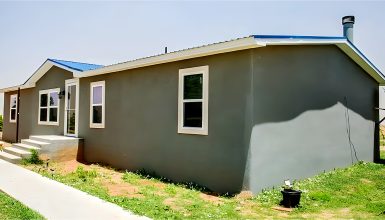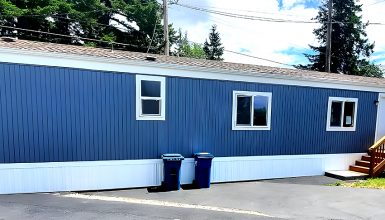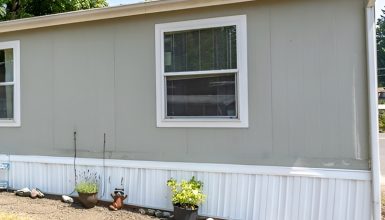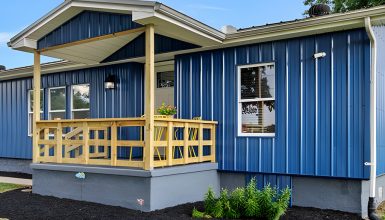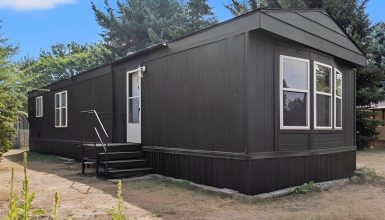Sunny afternoons, a tall glass of lemonade, and your charming mobile home basking in the golden glow. Now, imagine a house with squeaky clean, practically sparkling siding. That’s the dream, right? That’s where pressure washing comes in, a game-changer for maintaining the fresh look of your mobile home.
Let’s dive right into it and consider this guide your trusty sidekick. We’ll explore how to professionally clean your mobile home siding, saving your hard-earned money and ensuring a spotless curb appeal. Pressure washing may sound daunting at first, but by the end of this guide, you’ll be all set to tackle your siding like a pro.
Pressure Washing Basic
So, what’s the magic behind pressure washing? It’s all about the power of water. Imagine a super-charged garden hose but packing a punch that can blast away grime, dirt, and mildew. That’s your pressure washer.
Pressure washers come in two types: electric and gas. Electric models are light, quiet, and perfect for light cleaning tasks. Gas models, on the other hand, are the big guns. They’re more robust and ideal for larger, tougher jobs. Think of them as the superheroes of outdoor cleaning.
Now, safety comes first. Pressure washers aren’t toys, folks. They demand respect. The high-pressure stream can damage property or even cause injuries if not used properly. So, eye protection is necessary, and don’t forget those closed-toe shoes. Always aim the nozzle safely from the surface you’re cleaning, and avoid spraying toward people, pets, or delicate items.
Specs of a Pressure Washer for a Mobile Home
Let’s get into the nitty-gritty of choosing the suitable pressure washer for your mobile home.
- PSI
First up, PSI, or Pounds per Square Inch. It is the amount of cleaning force your pressure washer can deliver. For most mobile home siding, something in the range of 1300 to 2400 PSI is plenty. This pressure is strong enough to remove the dirt without damaging your siding.
- GPM
Now, let’s talk GPM or Gallons per Minute. It measures how much water your machine uses in a minute. The higher the GPM, the quicker you can clean because more water means more cleaning power. A GPM of 1.4 to 2.3 should do the trick for a typical mobile home project.
- CU
And then, we have CU or Cleaning Units. It is a measure of the pressure washer’s overall cleaning power. It’s simply PSI multiplied by GPM. A machine with 2800 to 3100 CU for your mobile home should provide enough cleaning power to shine that siding.
Remember, while higher numbers mean more power, they can also indicate a potential for more damage if not used carefully.
Benefits of Pressure Washing Your Mobile Home Siding
Let’s discuss why you’d want to pressure wash your mobile home siding. You see, it’s not just about getting that instant gratification from a job well done (although that’s a huge part, of course!).
- Quality Preservation
Your mobile home siding isn’t just there for looks. It protects your home from the elements, too. Pressure washing helps maintain that protective barrier, clearing away harmful substances like dirt, mold, and mildew that can cause decay over time.
- Curb Appeal
Everyone loves a clean, well-kept home. The sparkling result of a good pressure wash can dramatically boost your mobile home’s aesthetic appeal. Imagine your pride when neighbors pass by and admire your handiwork!
- Value Booster
If you’re considering selling your home down the line, pressure washing is an easy way to improve its value. A clean, well-maintained home is a more attractive buy, simple as that.
- Health Matters
Pressure washing isn’t just good for your home. It’s good for you too. Removing mold, mildew, and other allergens creates a healthier environment for you and your loved ones.
So, pressure washing your mobile home siding isn’t just a chore; it’s a savvy homeowner move. It’s like giving your mobile home a spa day – a refreshing treatment that makes it look good and rejuvenated.
What You’ll Need: Tools and Materials
Before we jump into the action, let’s gather our tools. Like any home improvement project, having the right equipment can make a difference. It’s not a long list, but each item has its job.
1. Pressure Washer
Choose one with the proper PSI, GPM, and CU for your mobile home siding. Whether you pick an electric or gas model, remember that it’s the cornerstone of your pressure-washing project.
2. Cleaning Solution
It is what will help dislodge all that stubborn grime from your siding. Look for an eco-friendly detergent designed for use with pressure washers. It’s good for your home and the environment.
3. Protective Gear
Your safety is priority number one. Grab a pair of sturdy closed-toe shoes, safety goggles, and perhaps even waterproof gloves. Let’s not forget old clothes you don’t mind getting wet or dirty!
4. Drop Cloths
To protect plants or items near your mobile home from any runoff. It’s all about being a responsible, respectful homeowner.
5. Extension Wand and Angled Wand
These are for reaching those high and hard-to-reach areas. They make the job easier, safer, and more efficient.
Gathered all your tools and materials? Great! You’re one step closer to tackling that siding and making your mobile home shine.
Preparation Before Pressure Washing
We’ve got our tools, and we’re eager to get started. But hold on a minute! Preparing is critical in pressure washing, just like baking a cake or painting a picture. We have a few things to do before we start the real fun.
- Inspect Your Siding
Take a walk around your mobile home. Look for any signs of damage or areas that might need special attention. Got a loose board or a crack in the siding? Fixing those first will prevent any further damage during the wash.
- Protect the No-Wash Zones
Some areas aren’t meant for pressure washing. Cover your windows, doors, and outdoor fixtures with drop cloths or plastic sheeting to keep them safe and dry.
- Sweep Off Loose Debris
A quick sweep can make your job easier. Clear off any loose dirt or cobwebs from the siding. It’s like brushing your teeth before using mouthwash – double the clean!
- Pre-treat Your Siding
Mix your cleaning solution as directed and apply it to the siding. It allows it to soak in and break down the dirt before you start pressure washing. It’s all about teamwork – let the solution do some of the work for you!
You’re officially ready to start pressure washing once you’ve checked these off your list. Good prep work means a smoother job and a cleaner mobile home.
Step-by-Step Guide to Pressure Washing Your Mobile Home Siding
Let’s roll! This is where the rubber meets the road, or in our case, where the water meets the siding. You’ve prepared well; it’s time to pressure wash your mobile home like a pro. Let’s get to it!
Step 1: Set Up Your Pressure Washer
Connect your pressure washer to the water supply. Ensure your cleaning solution is ready and your protective gear is on. Remember to keep safety first!
Step 2: Test Your Washer
Choose a small, inconspicuous area and give your pressure washer a test run. Make sure the pressure feels right and isn’t damaging the siding. This little test can save you big headaches!
Step 3: Start from the Top
Start washing from the top and work your way down. Why? Gravity, my friend! This way, any dirt and detergent that runs down will be cleaned up as you progress downwards.
Step 4: Use Smooth, Overlapping Strokes
Imagine you’re painting a picture. You want smooth, even strokes, slightly overlapping each other. It ensures no spot is missed, and you don’t accidentally spray the same area twice and cause damage.
Step 5: Mind Your Distance
Stay about a foot away from the siding. Too close, and you could cause damage; too far away, and you won’t clean effectively.
Step 6: Be Extra Careful Around Windows and Doors
The areas around windows and doors can be more susceptible to water damage. Use a lower pressure and be mindful not to let water seep into the edges.
Step 7: Rinse Thoroughly
After you’ve washed each section, rinse from top to bottom to remove the cleaning solution and dislodged dirt. Ensure no detergent is left behind, as it can leave streaks or spots on your siding.
Pressure Setting Tips
While you can apply the general steps for pressure washing to many types of siding, it’s important to note that different materials may require slightly different care. Remember, the correct pressure settings are essential for cleaning effectively without causing damage.
For example, vinyl siding is quite durable. It can withstand a high PSI but is susceptible to cracking if hit at the wrong angle. Aim for a setting between 1300 and 1600 PSI. It’s strong enough to clean but not so strong as to cause damage.
Aluminum siding is also fairly durable, but you must be careful not to dent it with water pressure. Stick to a range of 1200 to 1500 PSI to remove the grime and keep the siding intact.
On the other hand, wood siding can be more delicate, and you’ll want to use a lower PSI. To avoid damaging the wood, use a lower setting of around 800 to 1200 PSI. Gentle and steady does the trick!
If your mobile home has a different type of siding, like stucco or brick, use 500 to 1000 PSI is recommended. Testing a small, inconspicuous area before pressure washing the entire siding is always a good idea. It allows you to ensure the pressure and cleaning solution aren’t cause damage.
Common Mistakes to Avoid When Pressure Washing
Now that we’ve covered all the right things to do let’s touch on a few common missteps. Even the best of us can slip up, but knowing these common mistakes can help you avoid a pressure-washing faux pas.
- Skipping Safety Gear
Your safety is priority number one. Always wear protective gear, including safety goggles, closed-toe shoes, and perhaps waterproof gloves. Don’t let the excitement of a new project compromise your well-being.
- Ignoring the PSI
The wrong pressure can damage your siding. Constantly adjust your PSI according to your siding material. Remember, more power isn’t always better!
- Forgetting to Test
Always test an inconspicuous spot before you start. This way, you can ensure the pressure and detergent won’t harm your siding. Consider it your pressure-washing safety net.
- Starting at the Bottom
Water flows downwards, my friend! Always start from the top and work your way down. This way, you won’t have dirty water over your already clean areas.
- Overlooking the Weather
Pressure washing on a windy day can make the job harder and less effective. And if it’s too cold, the water can freeze on your siding. Check the forecast before you start your project.
- Neglecting Plants and Fixtures
Always cover your plants, outdoor fixtures, and anything that shouldn’t get wet. Your garden and your light fixtures will thank you!
How Much Does It Cost To Pressure Wash A Mobile Home?
After all, while we’re all about the DIY spirit here, it’s always important to weigh the cost of a project. The cost to pressure wash a mobile home can vary based on a few factors, so let’s break it down.
Firstly, if you’re going DIY, you’ll need to consider the cost of renting or buying a pressure washer. Renting a pressure washer could cost anywhere from $50 to $100 daily, depending on the type and model. If you’re looking to buy, pressure washers can range from $100 to over $500 for more heavy-duty models.
Next, a factor in the cost is a good quality cleaning solution. You might spend around $10 to $20 on this, but it’s worth it for the sparkling results.
And don’t forget about protective gear: safety goggles, closed-toe shoes, and waterproof gloves. These may already be in your toolbox, but if not, you’ll need to add them to your budget.
But let’s say you’re not up for the DIY route and would instead hire a professional. In that case, pressure washing services generally charge by square foot. Prices can range from $0.08 to $0.40 per square foot, depending on your location and the job’s complexity. So for an average-sized mobile home, you could expect to pay between $100 and $400.
Whether you decide to DIY or hire a pro, the result is an investment in your mobile home’s longevity and curb appeal. So consider these costs a small price for a fresh, clean home that will turn heads!
Conclusion
Pressure washing is a skill; like any skill, it comes with a learning curve. But with these guides, you’ll avoid the most common pitfalls and keep your project on track. And remember, start with the lowest pressure and slowly increase as needed. Testing on an inconspicuous area first will give you the confidence to proceed with the rest of your mobile home. Thank you for reading!

